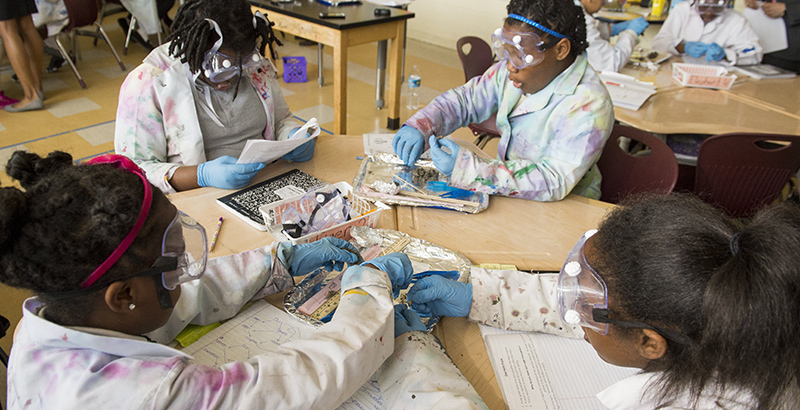Analysis: By 2022, America Will Need 1 Million More College Grads With STEM Training Than We Are on Track to Produce

“There can be no life without change, and to be afraid of what is different or unfamiliar is to be afraid of life.”
The words of Teddy Roosevelt hold a timeless truth: The one constant in life is change — and today we live in a moment of great change and great opportunity. Nowhere is this more apparent than in examining the shifts in America’s workforce as automation and rapid technological advancement transform the global economy.
These forces of change have sparked national conversations about how to prepare our students for the changing nature of work and grasp the opportunities of a 21st century economy.
As our economy evolves, we must evolve with it, developing a workforce prepared to meet the demands of a new economy. Now is our chance to build a workforce ready to succeed over a lifetime, not just over the next three to five years.
At the heart of the opportunities and risks we face in a new global economy is the increasing value of skills rooted in science, technology, engineering, and mathematics (STEM). Indeed, 10 of the top 14 fastest-growing industries require STEM training. To keep up with the projected growth in demand for STEM jobs, America will need an additional 1 million more college graduates with STEM training by 2022 than we’re on track to produce.
Additionally, traditional middle-skills jobs such as manufacturing that once required only a high school diploma now require a greater STEM background. Because of this, industries are facing a shortage of qualified applicants for these skilled positions.
But so far, many fixes have focused on the short term— rapidly training workers to learn the skills needed to fill existing jobs, from an ultrasound technician to a solar panel factory worker.
To solve the problem, however, we need a long-term approach.
Given the accelerating pace of technological advances, there’s a good chance that a job that is easy to train for in a few months could be automated in a few years. The World Economic Forum suggests that 65 percent of children entering primary school today will ultimately end up working in jobs that don’t exist yet. There will be an increasing need to take our fundamental skills and adapt them to new settings.
To prepare future workforce generations for the changes that await them, we must invest in people’s fundamental skills, starting in kindergarten and continuing through high school and beyond. For success in a 21st century economy, K-12 teachers must be teaching students STEM skills and how to apply them to think carefully, creatively, and critically.
That is why we are both invested in a collaborative national effort to recruit and train 100,000 excellent K-12 STEM teachers by 2021: because strengthening K-12 STEM education is the best long-term commitment we can make to prepare our country for the changes to come. The effort, called 100Kin10, is driven by a diverse coalition of best-in-class organizations and businesses including the New York City Department of Education, the American Federation of Teachers, Google, Chevron, and the UTeach Institute, along with nearly 300 others — all of whom recognize the urgency of this moment and have a stake in America’s continued competitiveness on the global stage.
America has been here before. When agricultural automation in the early 20th century reduced demand for farmworkers, the country instituted universal high school education to prepare children for the professional jobs of the future. We expanded our vision of what could be possible if kids learned new skills, and the country reaped the benefits.
Today, we face a similar shift, driven by the same kind of economic realities. The lessons of history demand that we ensure schools are teaching the skills that will drive tomorrow’s economy. We must seize this opportunity to set our workforce up for lifelong success — not just success in the next three to five years.
We should not, however, abandon mid-career training for workers who need to build new skills. Those programs are critical for the coal miner in West Virginia or the unemployed car assembler in Ohio. But we can, and must, do two things at once: help existing workers build new skills and foundational STEM knowledge, and ensure that new high school graduates have the skills they need to adapt themselves far into the future.
We have to take the long view in tackling these problems. We need a sustainable approach to workforce development that advances solutions, not just when workers’ skills have to change out of necessity, but also when our children are still building a base of knowledge and skills.
Get stories like these delivered straight to your inbox. Sign up for The 74 Newsletter

;)

